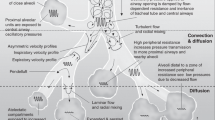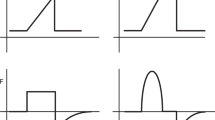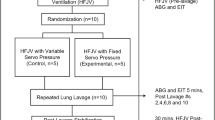Abstract
Objective:
High-frequency oscillatory ventilation (HFOV) has been described as a rescue therapy in severe respiratory distress syndrome (RDS) with a potential protective effect in immature lungs. In recent times, HFOV combined with the use of volume guarantee (VG) strategy has demonstrated an independent effect of the frequency on tidal volume to increase carbon-dioxide (CO2) elimination. The aim of this study was to demonstrate the feasibility of using the lowest tidal volume on HFOV+VG to prevent lung damage, maintaining a constant CO2 elimination by increasing the frequency.
Study Design:
Newborn infants with RDS on HFOV were prospectively included. After adequate and stable ventilation using a standard HFOV strategy, the tidal volume was fixed using VG and decreased while the frequency was increased to the highest possible to maintain a constant CO2 elimination. Pre- and post-PCO2, delta pressure and tidal volume obtained in each situation were compared.
Result:
Twenty-three newborn infants were included. It was possible to increase the frequency while decreasing the tidal volume in all patients, maintaining a similar CO2 elimination, with a tendency to a lower mean PCO2 after reaching the highest frequency. High-frequency tidal volume was significantly lower, 2.20 ml kg−1 before vs 1.59 ml kg−1 at the highest frequency.
Conclusion:
It is possible to use lower delivered tidal volumes during HFOV combined with VG and higher frequencies with adequate ventilation to allow minimizing lung injury.
This is a preview of subscription content, access via your institution
Access options
Subscribe to this journal
Receive 12 print issues and online access
$259.00 per year
only $21.58 per issue
Buy this article
- Purchase on Springer Link
- Instant access to full article PDF
Prices may be subject to local taxes which are calculated during checkout


Similar content being viewed by others
References
Cools F, Henderson-Smart DJ, Offringa M, Askie LM . Elective high-frequency oscillatory ventilation versus conventional ventilation for acute pulmonary dysfunction in preterm infants. Cochrane Database Syst Rev 2009; 3: CD000104.
Cools F, Askie LM, Offringa M, Asselin JM, Calvert SA, Courtney SE et alon behalf of PreVILIG Collaboration.. Elective high-frequency oscillatory versus conventional ventilation in preterm infants: a systematic review and meta-analysis of individual patients' data. Lancet 2010; 375: 2082–2091.
Cools F, Askie LM, Offringa M for the Prevention of Ventilator Induced Lung Injury collaborative study Group (PreVILIG Collaboration).. Elective high-frequency oscillatory ventilation in preterm infants with respiratory distress syndrome: an individual patient data meta-analysis. BMC Pediatr 2009; 9: 33.
Bollen CW, Uiterwaal CS, van Vught AJ . Cumulative meta-analysis of high-frequency versus conventional ventilation in premature neonates. Am J Respir Crit Care Med 2003; 168: 1150–1155.
Slutsky AS, Drazen FM, Ingram RH Jr, Kamm RD, Shapiro AH, Fredberg JJ et al. Effective pulmonary ventilation with small-volume oscillations at high frequency. Science 1980; 209 (4456): 609–611.
Johnson AH, Peacock JL, Greenough A, Marlow N, Limb ES, Marston L et alfor the United Kingdom Oscillation Study Group. High-frequency oscillatory ventilation for the prevention of chronic lung desease of prematurity. N Engl J Med 2002; 347: 633–642.
Tingay DG, Mills JF, Morley CJ, Pellicano A, Dargaville PA . Indicators of optimal lung volume during high-frequency oscillatory ventilation in infants. Crit Care Med 2013; 41: 237–244.
Delemos RA, Coalson JJ, Gerstmann DR, Null DM Jr, Ackerman NB, Escobedo MB et al. Ventilatory management of infant baboons with hyaline membrane disease: the use of high frequency ventilation. Pediatr Res 1987; 21: 594–602.
Meredith KS, deLemos RA, Coalson JJ, King RJ, Gerstmann DR, Kumar R et al. Role of lung injury in the pathogenesis of hyaline membrane disease in premature baboons. J Appl Physiol 1989; 66: 2150–2158.
Thome UH, Carlo WA, Pohlandt F . Ventilation strategies and outcome in randomised trials of high frequency ventilation. Arch Dis Child Fetal Neonatal 2005; 90: F466–F473.
Bollen CW, Uiterwaal CS, van Vught AJ . Meta-regression analysis of high-frequency ventilation versus conventional ventilation in infant respiratory distress syndrome. Intensive Care Med 2007; 33: 680–688.
Courtney SE, Durand DJ, Asselin JM, Hudak ML, Aschner JL, Shoemaker CT for the Neonatal Ventilation Study Group. High-frequency oscillatory ventilation versus conventional mechanical ventilation for very-low-birth-weight infants. N Engl J Med 2002; 347: 643–652.
Zivanovic S, Peacock J, Alcazar-Paris M, Lo JW, Lunt A, Marlow N et al, for the United Kingdom Oscillation Study Group. Late outcomes of a randomized trial of high-frequency oscillation in neonates. N Engl J Med 2014; 370: 1121–1130.
Boynton BR, Hammond MD, Fredberg JJ, Buckley BG, Villanueva D, Frantz ID . Gas exchange in healthy rabbits during high-frequency oscillatory ventilation. J Appl Physiol 1989; 66: 1343–1351.
Pillow JJ . High-frequency oscillatory ventilation: mechanisms of gas exchange and lung mechanics. Crit Care Med 2005; 33: S135–S141.
Hatcher D, Watanabe H, Ashbury T, Vincent S, Fisher J, Froese A . Mechanical performance of clinically available, neonatal, high-frequency, oscillatory-type ventilators. Crit Care Med 1998; 26: 1081–1088.
Sánchez Luna M, Santos González M, Tendillo Cortijo F . High-frequency oscillatory ventilation combined with volume guarantee in a neonatal animal model of respiratory distress syndrome. Crit Care Res Pract 2013; 2013: 593915.
Mukerji A, Belik J, Sanchez-Luna M . Bringing back the old: time to reevaluate the high-frequency ventilation strategy. J Perinatol 2014; 34: 464–467.
Zimová-Herknerová M, Plavka R . Expired tidal volumes measured by hot-wire anemometer during high-frequency oscillation in preterm infants. Pediatr Pulmonol 2006; 41: 428–433.
Scalfaro P, Pillow JJ, Sly PD, Cotting J . Reliable tidal volume estimates at the airway opening with an infant monitor during high-frequency oscillatory ventilation. Crit Care Med 2001; 29: 1925–1930.
Chan V, Greenough A, Milner AD . The effect of frequency and mean airway pressure on volume delivery during high-frequency oscillation. Pediatr Pulmonol 1993; 15: 183–186.
Pillow JJ, Neil H, Wilkinson MH, Ramsden CA . Effect of I/E ratio on mean alveolar pressure during high-frequency oscillatory ventilation. J Appl Physiol 1999; 87 (1): 407–414.
Slutsky AS, Kamm RD, Rossing TH, Loring SH, Lehr J, Shapiro AH et al. Effects of frequency, tidal volume, and lung volume on CO2 elimination in dogs by high frequency (2-30 Hz), low tidal volume ventilation. J Clin Invest 1981; 68: 1475–1484.
Rieke H, Hook C, Meyer M . Pulmonary gas exchange during high-frequency ventilation in dogs. Respir Physiol 1983; 54: 1–17.
Watson JW, Jackson AC, Gillespie JR . CO2 elimination and airway opening pressure during high frequency oscillation in dogs. Respir Physiol 1984; 58: 235–244.
Fessler HE, Hager DN, Brower RG . Feasibility of very high-frequency ventilation in adults with acute respiratory distress syndrome. Crit Care Med 2008; 36: 1043–1048.
HIFI Study Group. High-frequency oscillatory ventilation compared with conventional mechanical ventilation in the treatment of respiratory failure in preterm infants. N Engl J Med 1989; 320: 88–93.
Jobe AH, Ikegami M . Lung development and function in preterm infants in the surfactant treatment era. Annu Rev Physiol 2000; 62: 825–846.
Author information
Authors and Affiliations
Corresponding author
Ethics declarations
Competing interests
MSL has received advisory board consulting fees from Dräger. The remaining authors have no conflicts to declare.
Rights and permissions
About this article
Cite this article
González-Pacheco, N., Sánchez-Luna, M., Ramos-Navarro, C. et al. Using very high frequencies with very low lung volumes during high-frequency oscillatory ventilation to protect the immature lung. A pilot study. J Perinatol 36, 306–310 (2016). https://doi.org/10.1038/jp.2015.197
Received:
Revised:
Accepted:
Published:
Issue Date:
DOI: https://doi.org/10.1038/jp.2015.197
This article is cited by
-
High-frequency ventilation in preterm infants and neonates
Pediatric Research (2023)
-
Impact on cerebral hemodynamics of the use of volume guarantee combined with high frequency oscillatory ventilation in a neonatal animal respiratory distress model
European Journal of Pediatrics (2023)
-
DCO2/PaCO2 correlation on high-frequency oscillatory ventilation combined with volume guarantee using increasing frequencies in an animal model
European Journal of Pediatrics (2020)
-
Effect of a new respiratory care bundle on bronchopulmonary dysplasia in preterm neonates
European Journal of Pediatrics (2020)
-
Use of very low tidal volumes during high-frequency ventilation reduces ventilator lung injury
Journal of Perinatology (2019)



